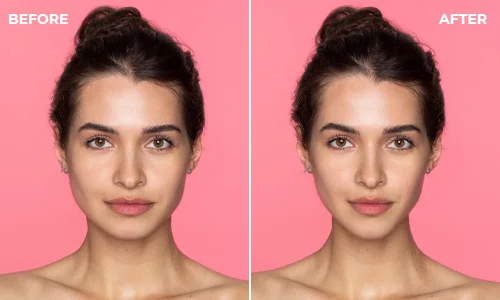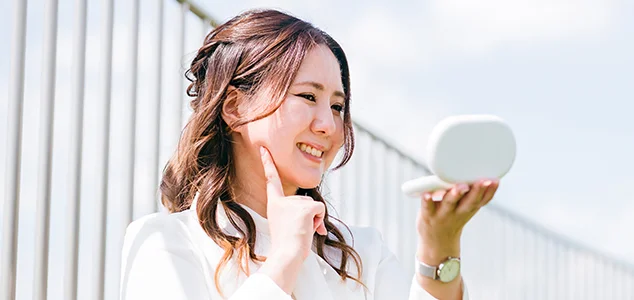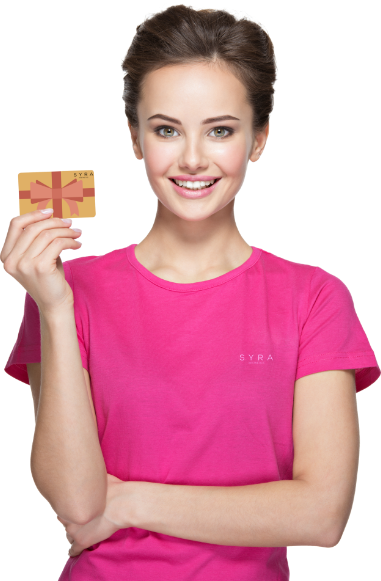Table of Contents
Do you wake up with a sore jaw or frequent headaches? You might be one of the many people experiencing jaw clenching, and who grind their teeth at night, which is commonly known as bruxism.
What if we told you there’s a surprising solution to bruxism (jaw clenching) that not only eases the pain in masseter muscles but also smooths out wrinkles? – Botox for teeth grinding!
In today’s blog, we’ll explain what bruxism is, the procedure of Botox for teeth grinding, and the benefits of this innovative treatment, showing you how Botox NYC offered at Syra Aesthetics can bring back relief and a smile to your face.
What Is Botox For Teeth Grinding (Bruxism)?
Botox, widely recognized for its cosmetic benefits in reducing wrinkles, also serves as a valuable treatment for addressing jaw clenching and teeth grinding, medically known as bruxism.
Bruxism involves the involuntary grinding of teeth and clenching of the jaw, often occurring during sleep and leading to dental damage, jaw pain, and headaches.
Botox injections can effectively alleviate these symptoms by relaxing the masseter muscles, primarily responsible for bruxism. This treatment not only provides significant relief but can also aid in jaw slimming and enhancing overall facial aesthetics.
For those considering this therapeutic approach in New York City, exploring options for Botox injections NYC can provide access to specialized care and expertise in addressing bruxism effectively.
What Are The Signs and Symptoms of Jaw Clenching (Bruxism)?
Bruxism can manifest through various signs and symptoms, including:
- Worn-down teeth
- Tooth sensitivity or pain
- Jaw, neck, or face pain
- Earaches
- Tension headaches, especially around the temples
- Sleep disruption
- Scalloped tongue
- Damage to the inside of the cheek
What Causes Teeth Grinding (Bruxism)?
Bruxism causes involve physical, psychological, as well as genetic factors. Common bruxism causes include:
- Stress and anxiety
- Abnormal bite or misaligned teeth
- Sleep disorders such as sleep apnea
- Lifestyle factors like smoking, alcohol consumption, and caffeine
- Certain medications, especially antidepressants
What are the Risks and Side Effects of Botox for Teeth Grinding?
While Botox is generally safe, it can have some side effects, such as:
- Pain, swelling, or bruising at the injection site
- Headaches
- Flu-like symptoms
- Dry mouth
- Drooping of the eyelid or brow if injected improperly
- Difficulty swallowing or speaking in rare cases
What is the Procedure for Getting Botox for Teeth Grinding?
The procedure for Botox for teeth grinding is simple and usually involves the steps listed below:
- Consultation: The doctor assesses your condition and discusses your treatment goals.
- Preparation: The injection sites are cleaned, and a topical anesthetic may be applied.
- Injection: Botox is injected into the masseter muscles (main jaw muscles involved in clenching).
- Post-Treatment: Normal activities can usually be resumed immediately, though strenuous exercise should be avoided for the first 24 hours.
How Does Botox For Teeth Grinding Work?
Botox works by temporarily paralyzing the masseter muscles it is injected into. For bruxism, Botox relaxes the masseter muscles, reducing their ability to clench and grind the teeth. This results in pain relief, decreased tooth wear, and improved sleep quality.
Where to Inject Botox for Teeth Grinding?
To treat bruxism, Botox is typically injected into the masseter muscles, located on the sides of the jaw. In some cases, injections may also be administered in the temporalis muscles, located on the sides of the forehead, if these muscles contribute to jaw clenching and grinding.
Botox for Teeth Grinding Cost?
The cost of Botox NYC for teeth grinding varies based on several factors, including the amount of masseter Botox needed, the provider’s expertise, and your location. On average, you can expect to pay between $300 and $700 per treatment session.
Botox for Teeth Grinding Before and After
Patients who undergo Botox treatment for bruxism often report significant improvements, such as reduced jaw pain, fewer headaches, jaw slimming, and less tooth wear.

Before and after photos can illustrate the relaxation of the jaw muscles and a reduction in facial swelling associated with bruxism.
What are the Pros and Cons of Botox for Grinding Teeth?
– Pros:
- Non-invasive treatment
- Quick and relatively painless procedure
- Significant symptom relief
- Reduces dental damage and wear on teeth
- Improves sleep quality
– Cons:
- Temporary solution requiring repeat treatments every 3-6 months
- Potential side effects and risks
- Costs can accumulate over time
- Does not cure the underlying causes of bruxism
- Lead to both TMJ problems and tooth deterioration
How Many Units of Botox Does it Take to Stop Teeth Grinding?
The number of Botox units required varies per patient, typically ranging from 20 to 30 units per side of the jaw. Your healthcare provider will determine the appropriate dosage based on the severity of your bruxism and your muscle mass.
How Many Units of Botox Do I Need for Jaw Clenching?
For jaw clenching, the dosage is similar to that for teeth grinding, usually between 20 and 30 units per side. The exact amount will be tailored to your specific needs by your provider.
How Does Botox Help with Jaw Clenching?
Botox helps with jaw clenching (jaw botox masseter) by relaxing the masseter muscles, reducing their ability to exert excessive force. This alleviates pain, reduces muscle hypertrophy, and prevents the associated dental and facial issues.
Does Botox Reduce Jaw Pain?
Yes, Botox can reduce jaw pain by temporarily relaxing the muscles involved in conditions like TMJ disorders or bruxism, which often cause jaw tension and discomfort.
How Long Does Botox for Teeth Grinding Last?
Botox treatments for bruxism generally last between 3 and 6 months. The duration can vary depending on the individual’s response and the dosage administered. Regular follow-up treatments are necessary to maintain the benefits.
Why Choose Botox for Teeth Grinding?
Many individuals don’t want the burden of wearing a mouth guard. Botox is an effective, non-surgical option for managing bruxism. It offers significant symptom relief with minimal downtime, making it a convenient choice for many patients. Additionally, Botox injection can help prevent long-term dental damage associated with chronic teeth grinding.
Where to Get Botox for Teeth Grinding in Manhattan, NYC?
Many qualified dermatologists, plastic surgeons, and dental specialists offer Botox treatments in Manhattan, NYC for bruxism. It’s essential to choose a provider with experience in treating bruxism to ensure safe and effective results.
Which Botox Lasts the Longest?
The longevity of Botox results can depend on the formulation and the individual’s response to treatment. Generally, the effects of Botox (onabotulinumtoxinA) are consistent, lasting between 3 and 6 months. Newer formulations and techniques may offer slightly longer-lasting results, but individual experiences can vary.
Does Botox Weak the Masseter Muscle?
Yes, Botox weakens the masseter muscle by temporarily blocking nerve signals that cause muscle contraction, leading to a reduction in muscle size and strength over time.
Frequently Asked Questions
Q1: Does Botox help teeth-grinding?
Yes, Botox can help alleviate teeth-grinding (bruxism) by relaxing the jaw muscles. It reduces the muscle activity responsible for grinding, which can decrease pain, wear on teeth, and other related symptoms.
Q2: Can I eat after jaw Botox?
Yes, you can eat after receiving Botox in your jaw, but it’s advisable to wait at least 30 minutes to an hour. Soft foods are recommended initially to avoid excessive chewing, which can help ensure the Botox settles properly in the targeted muscles.
Q3: Is dental Botox safe?
Yes, dental Botox is generally safe when administered by a qualified professional. It effectively treats conditions like teeth-grinding, TMJ disorders, and facial pain. Side effects are usually mild and temporary, but consulting with a healthcare provider for personalized advice is essential.
Q4: Does insurance cover Botox for jaw clenching?
Insurance coverage for Botox to treat jaw clenching (bruxism) varies. Some policies may cover it if deemed medically necessary, particularly for severe cases causing severe pain or damage. It’s essential to check with your insurance provider for specific coverage details and requirements.
Q5: Does Botox for bruxism change face shape?
Botox for bruxism typically does not change the face shape. It targets specific jaw muscles to reduce grinding without affecting the overall facial structure. The treatment aims to relax muscles involved in clenching, offering relief from symptoms without altering facial contours.
Q6: What is Botox made from?
Botox is made from a purified form of botulinum toxin, specifically botulinum toxin type A. This neurotoxin is produced by the bacterium Clostridium botulinum. When used in medical or cosmetic treatments, it temporarily paralyzes muscles by blocking nerve signals, reducing wrinkles, or treating medical conditions like muscle spasms.
Q7: Can Botox help with teeth grinding?
Botox injections can effectively treat teeth grinding (bruxism) by relaxing the jaw muscles responsible for clenching. This can reduce the intensity of grinding and alleviate associated symptoms like jaw pain and headaches. Treatment effectiveness varies, and it’s crucial to consult a qualified healthcare provider for assessment and administration.

-
About The Author
Dr. Syra Hanif M.D.Board Certified Primary Care Physician
Dr. Hanif is the Director of Aesthetic Medicine. She is a board-certified physician in Aesthetic Medicine who specializes in using non-surgical alternatives in order to enhance one's appearance through Botox and fillers.
Read More


